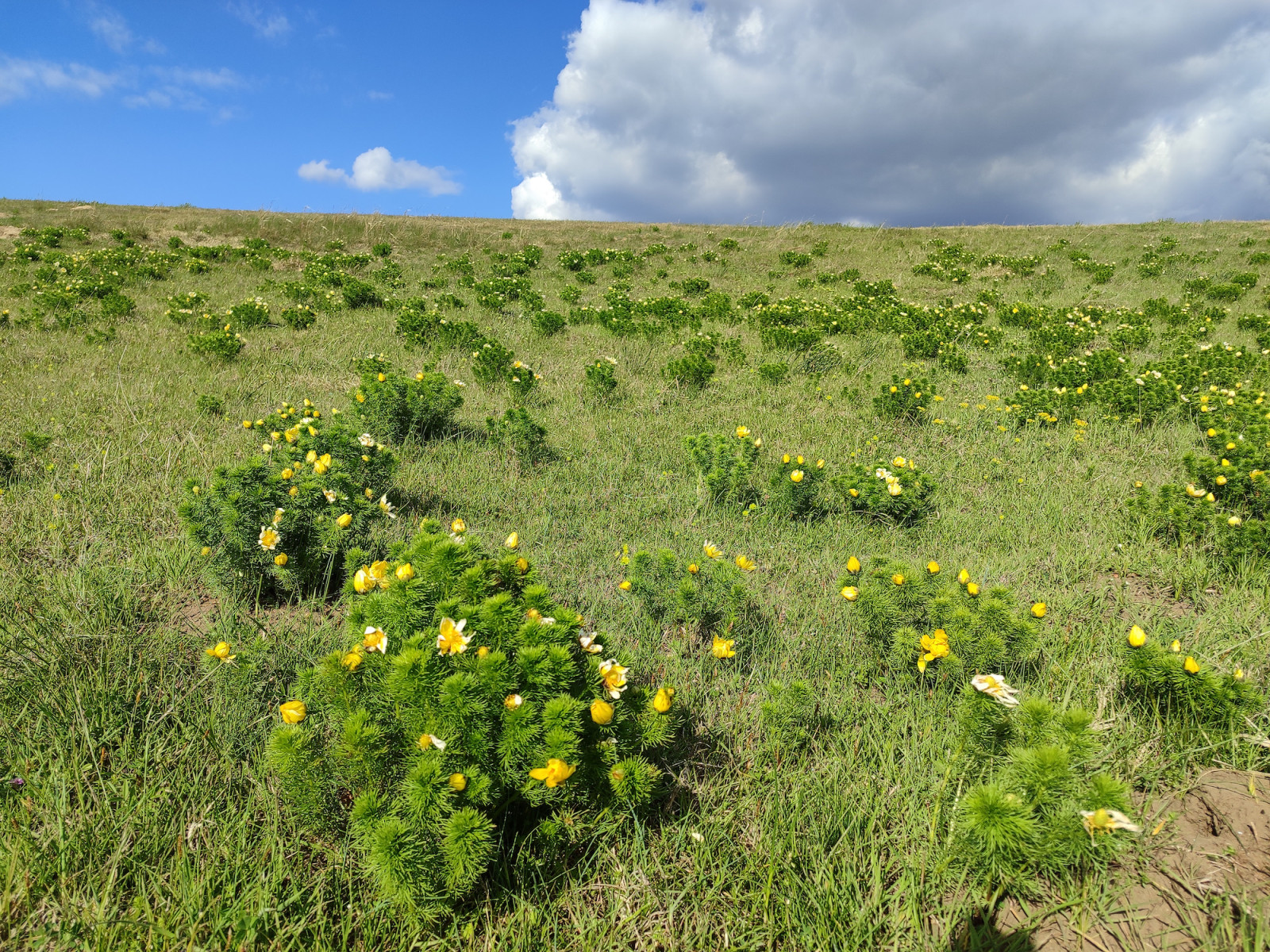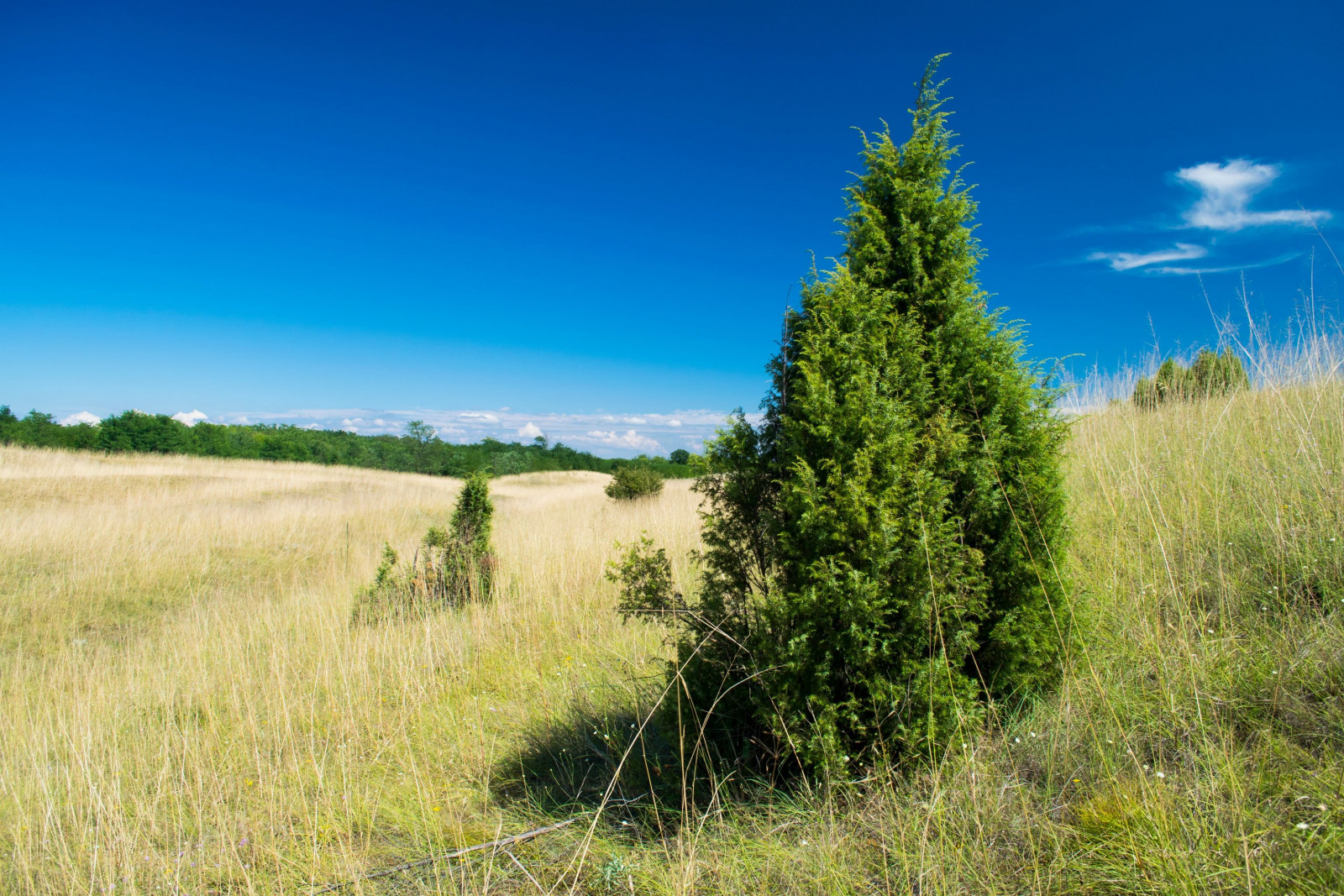Opis
Grassland with beautiful needle grasses (Stipa) on rolling sand dunes, interspersed with bushes of hawthorn and junipers.
Characteristic birds of these dry and sunny areas are dudek, turkawka, żołna, dzierzba czarnoczelna and gąsiorek, lerka, skowronek, dzierlatka (zwyczajna), brzegówka, jarzębatka, białorzytka, świergotek polny and świergotek drzewny. During May migration kraska and few dozen strong flocks of kobczyk were observed on the wires. Among the local rarities, look out for the highly localised skowrończyk krótkopalcowy.
Photos by Aleksandar Urosevic, Mileta Cekovic and Dragan Simic.
Szczegóły
Dostęp
The area is accessible from several points off the Kovin – Dubovac road. Driving from Kovin, Hatarica starts about 2 km after the village of Gaj and spreads at the right (southern) side of the road. Zoom in on the map and click on the "P" (parking) sign for driving directions.
A large road-side puddle holds water through the most of the year and in migration attracts waders – szczudłak, czajka, samotnik, łęczak, brodziec śniady, krwawodziób, kwokacz, batalion, etc.
Teren i siedlisko
Wydmy , Łąka , Rzadkie drzewa i krzewy , StepWarunki
Piaszczysty , Brak cienia , Otwarty krajobraz , PylistyTrasa dookoła
NieCzy luneta będzie przydatna ?
Może być przydatnaUdany sezon obserwacyjny
Wiosna , LatoNajlepszy czas na wizytę
Wiosenne migracje , Jesienne migracje , WiosnaTrasa
Szeroka ścieżka , Droga nieutwardzonaPoziom trudności szlaku pieszego
Średnio wymagający spacerDostępne
Pieszo , SamochódCzatownia/platforma obserwacyjna
NieDodatkowe informacje
Carry plenty of water on hot days. Sheepdogs which guard the sheep on the pasture could be a problem if the sheep are approached. If the weather is dry, it is partially possible to explore some of Hatarica by car (beware of loose sand), but if there were rains in the previous days, mud and puddles are possible in lower parts of it (beware of deep ruts).
Stick to the existing dirt tracks and do not damage the sensitive vegetation by creating new sets of tracks! Also, be extra careful not to start a wildfire by an overheated exhaust pipe!

